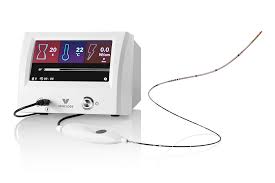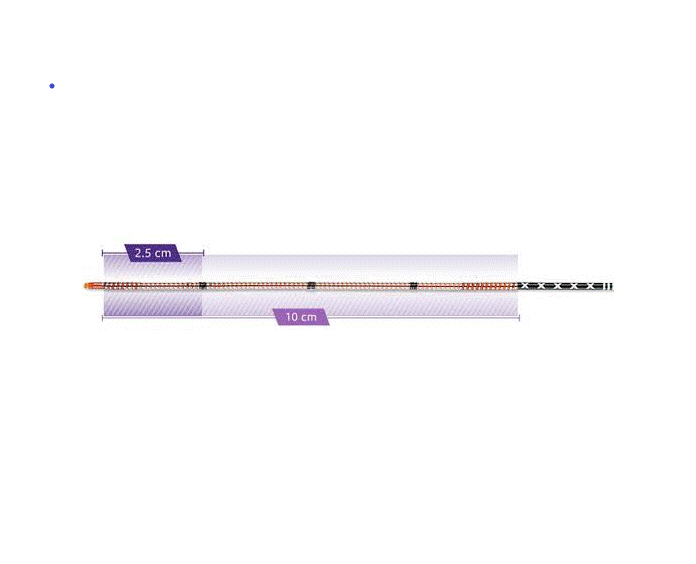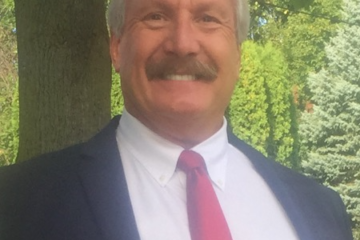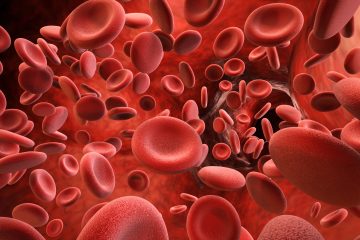VENCLOSE ECLIPSES 2018 RESULTS, PATIENT SUCCESS
By Larry Storer
As Venclose enters its third full year of marketing its next-generation radiofrequency ablation solution for treating venous reflux disease, the company proves the adage that if you build a better product you will be successful.
Venclose, a privately held Silicon Valley medical technology company, more than doubled its 2018 results for the Venclose Radiofrequency Ablation System in 2019 and is on pace to more than double those figures again in 2020.
Chairman and CEO Jerry Gibson said that in 2018, its first full year of sales, Venclose treated almost 17,000 patients with venous disease. In its second year in 2019, the Venclose system treated approximately 38,000 patients and doubled 2018 revenue.

“We experienced an extremely successful year,” Gibson said recently. “The market had been waiting over a decade for something like our product in 2017, so we gained immediate traction in 2018.
“And 2019 was a great year for us as well. We doubled every category from 2018. We doubled utilization of our product, more than doubled our customer base and in fact overachieved on every parameter you can measure when you run a company – and we did it all with just a few extra sales professionals.
“Also, in 2019, we were able to generate a lot of interest from opinion leaders speaking at conferences and relating what they saw in our product and how it performs against the competition.”
These things are all very positive in growing the organization. “So, this shows you the uptake of existing customers utilizing and expanding their practices using our product.”
2020 KEY DRIVERS
The thing that contributed to those strong 2019 numbers was that Gibson and his team basically turned the Venclose entire supply chain upside down, starting in late 2018, and changed all of its suppliers to tier-one manufacturers who could keep pace with Venclose’s rapid growth rate.
“We completed that. Everything is on board and functioning, and we’re very happy with our choices and don’t anticipate manufacturing limiting our growth going forward in 2020 and beyond. So now we can just continue growing at a fast pace.
“This has already been a dynamic year for us. We’ve tripled our sales organization and we’re now covering about 90 percent of the United States. We’ll see tremendous results from the salesforce this year, to the point we anticipate doubling 2019 revenue and core product utilization in 2020.
Venclose is also expecting to launch a new product at midyear to treat perforator veins and serve a market segment now only open to the decade-old Medtronic RF system or lasers.
“Treating perforator veins currently represents about 10 to 15 percent of the marketplace, although we think there is a larger market opportunity based on what we believe will be significant technology improvements,” Gibson explained.
“We think there’s an underlying market that has held back because of the difficulty and time consumption in using current technology and we think we can mitigate that with our approach, which is substantially different than what is on the market today.”
This will be another Venclose product based on looking at the shortcomings of the current technology, determining what the doctors want, and coming up with a better approach and a superior product.
THE 2020 QUESTION MARK
But the big factor that looms over the fortunes of companies worldwide in 2020 is resiliency from restrictions of the novel coronavirus COVID-19. The virus arrived on shore in the United States in time to delay the Venous Symposium and the International Vein Congress until July, and the Outpatient Endovascular and Interventional Society meeting has been postponed without a new date as of our deadline.
These are important events for Venclose and other companies who need to get in front of vein physicians attending the conferences.
“As we know as much as we can about the buyers of today, we’re poised to grow expeditiously and don’t anticipate slowing down on a grand scale – at least as far as those things we can control,” Gibson said. “Obviously there are things we cannot control, like the coronavirus. We are in the middle of this thing right now, but we are hopeful that devastation to the human race and the economy of the world is minimal.
“But given how we interact on a social basis in a large population event, we’ll just have to wait-and-see the results of this pandemic on our business. I just don’t know because these are uncharted waters in my lifetime.”
VENCLOSE’S KEY TO SUCCESS
Gibson has been a steady leader during this time of great growth and change within the organization because he brought considerable experience to the company. He has held executive positions with medical companies beginning with Siemens Medical Solutions and others, including Nervive Inc. and Critical Perfusion Inc. He also was executive chairman of the board of VenX Medical and on the boards of three other medical companies.
“Our phenomenal growth at Venclose is because of the quality of the people on our team who have driven the innovation and the quality of our product.
“Our philosophy from the day we started hiring people is that we consider our people to be the major asset of our company. Our value proposition to our customers requires this. The results that we saw in 2018, 2019 and in so far in 2020 reflect the effort of our people to develop and sell a quality product,” Gibson said.
“We take great pride in the people in our organization because we place a lot of emphasis on selecting the right people. That has continued in the triple expansion of our sales organization and it has also continued with increasing the number of support people in both administration and marketing within our organization. It is all about selecting the right people and equipping them to accomplish the goals of the company.”
VENCLOSE’S ‘BETTER MOUSETRAP’
Another part of the success of the company is its product. When the company first started, Gibson said their premise was to assess the specific needs of the marketplace, understand what the needs were and the frustrations or concerns with the current systems.
Venclose consultants learned from physicians across the country that while many preferred the VNUS/Covidien/Medtronic RF solution created in the 1990s, they needed it to be faster, more economical, easier to navigate in the veins, easier to set up and with more responsive customer service.
“And the result was that we developed a product in the Venclose RF Ablation System that was more attuned to address the unmet needs of the physician – we built a better RF ablation product.”
The Venclose system consists of an intuitively operated RF generator and an innovatively engineered thermal ablation catheter that allows the physician to easily switch between the 2.5cm and 10cm treatment segments.
The digiRF console is a compact unit that powers up almost instantly. It has a touchscreen interface that displays real-time procedure data, including the ability to not only switch between the treatment segments, but also time of treatment and audible tones for thermal delivery that allows the physician to focus on the patient and not the display during the procedure.
“What we do is provide greater value to physicians and their patients, and we do this at a competitive price,” Gibson said. “Our catheter is comparable in price, but what our product can do in one catheter is half the price what they can do with two.”
The Venclose RF ablation catheter with its two heating lengths in the same catheter reduces the total in-vein time by up to 30 percent compared to the 7cm ClosureFAST catheter when treating a typical 40cm GSV, simplifies inventory management, and does in one catheter what the ClosureFAST system can only do in two.
The catheter sheath diameter is smaller at 6 Fr than the ClosureFAST at 7 Fr, which minimizes invasiveness and requires a smaller incision to access the vein. The smaller profile offers greater flexibility.
These newly designed technologies are what makes the Venclose System a next-generation product. Gibson said in an earlier interview with <ital>Vein Therapy News <endital> that there are four main functionalities that clearly separate Venclose from the current existing competitive legacy product.
“One, is that we have a switchable heating length built into a single catheter. So, we can treat a 10cm or a 2.5cm segment by switching back and forth with the generator’s touchscreen. For our competitors to accomplish that, requires the clinician to pull out one catheter and put in another, which is inconvenient to the physicians, inconvenient to the patient for sure, and increases the cost of the procedure.
“Second, our product is smaller. It is a 6 Fr vs a 7 Fr catheter, which makes it easier to use.
“Third, it has a slightly curved tip which physicians report allows them to navigate through torturous veins much easier.
“The fourth significant functionality that distinguishes us from the legacy competitor is an easier system to set up. You can set up the Venclose system up by just inserting one plug versus carefully aligning an eight-prong plug that requires some orientation into the legacy competitor system. Our simple catheter connector inserts just like an amplifier jack.”
SUPPORT SERVICES
Gibson said he also believes that Venclose customer service further distinguishes the company from its competitor. “We focus every day on providing superior customer service.
“Having spent more than 20 years with large corporations, I know that sometimes as you get bigger that customer service becomes less of a factor for the success of the company – at least within the thought processes of a large company – so we make sure that we support our customers with a customer service department that is focused on addressing their needs in an expeditious manner. And that personal touch, I think, makes a difference as well.”
The marketing plan has always been to go after radiofrequency users, and that is still the bulk of the business. Physicians using RF ablation since the early days of VNUS are already sold on the technology.
“Our initial focus was on RF users because that was the low hanging fruit and we had already analyzed the physicians’ needs and wants. But we found out that there were a number of laser users who were older generation RF users who had moved to laser for one reason or another but liked RF better.
“So, when it became known that there was an RF alternative to the older legacy RF competitive product, we started getting business from the laser users that we originally didn’t anticipate. We currently convert new laser users almost every month. But the bulk of our business is from current RF users.” VTN





